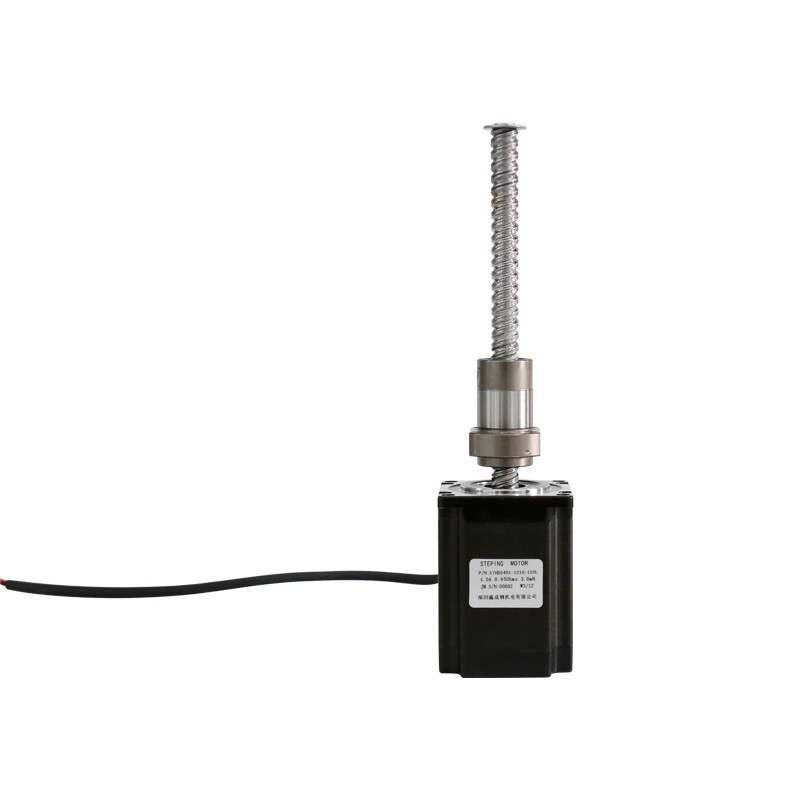Source:Industry News Release time:2022-02-26 Clicks: Popular:Reduction motor manufacturer

The speed of a stepper motor depends on the pulse frequency, the number of rotor teeth and the number of beats. Its angular velocity is proportional to the pulse frequency, flat and time-synchronous with the pulse. If the number of rotor teeth and the number of running beats remain unchanged, the required rotation speed can be obtained by controlling the pulse frequency. Since the stepper motor starts with its synchronous torque, the starting frequency is not high to avoid losing steps. Especially when the power increases, the rotor diameter increases, the inertia increases, and the difference between the starting frequency and the maximum operating frequency can reach 10 times.
In order to take full advantage of the motor's fast performance, the motor is usually started at a lower starting frequency, and then the pulse frequency is gradually increased to the required speed. The rate of change is chosen to ensure that the motor does not lose synchronization and to minimize start-up ramp-up time. In order to ensure the positioning accuracy of the motor, the pulse frequency must be gradually reduced from the maximum speed to a stopable speed before stopping. Generally speaking, when a stepper motor pulls a load to move a certain distance at high speed and position it accurately, it should include five stages: "start-acceleration-high-speed operation-deceleration-stop". And the speed curve is generally trapezoidal, and the one with a small distance is a triangular speed curve.
The biggest feature of the stepper motor that is different from other control motors is that it can accept digital control signals (electrical pulse signals) and convert them into corresponding angular displacement or linear displacement, so it itself is a digital-to-analog conversion operating unit. And it can perform open-loop position control, and input a pulse signal to obtain a certain position increment. Compared with traditional DC servo systems, the cost of this incremental position control system is significantly reduced and almost no system adjustments are required.
Recommended reading
Briefly describe the main features of stepper motors and stepper motor drivers
Related Information
Right angle motor
2020-12-21Stepper motor
2020-12-21CGXK115
2021-01-13Governor
2020-12-21Planetary reducer
2020-12-21CGX115
2021-01-13Gear reduction motor
2021-04-17CGH-090L1-10-P1
2020-12-21CGF-042L1-8-P2
2020-12-21Stepper motor
2020-12-21CGXZK042
2021-01-13Stepper motor
2020-12-21CGXK085
2021-01-13CGXZ142
2021-01-13Stepper motor
2020-12-21Introduction to the advantages and disadvantages of three different stepping motor control methods
2022-02-28Things to note when operating the servo reducer
2022-06-27Stepper motor suppliers share three driving methods of stepper motor drivers
2022-09-14How many cooling methods are there for disc planetary reducer lubricating oil?
2022-10-13Analysis of the application characteristics of stepper motors in 3D printers
2022-06-02Talk about the importance of reduction motors
2022-09-05Applications of brushless DC motors
2022-05-31Three-phase stepper motor structural characteristics and technical parameters
2022-07-14Maintenance precautions during the running-in period of the reducer
2022-12-10Application and maintenance of right angle planetary reducer
2022-10-09Reduced motor-low speed and high torque transmission equipment
2022-08-16How to limit the current of the corner reducer
2022-11-09Application of stepper motors in CNC machine tools
2022-06-09What is a hard tooth surface reduction motor?
2022-09-20Stepper motor application considerations
2022-06-17